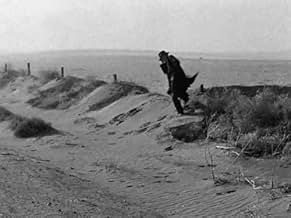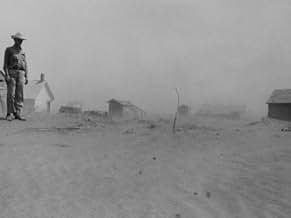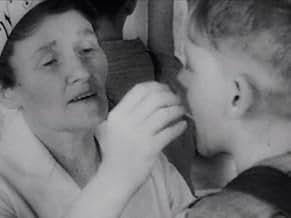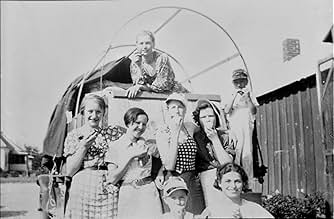IMDb RATING
8.2/10
2.3K
YOUR RATING
A documentary about the 1930s drought of North American prairie farm land, and its consequences during the great depression.A documentary about the 1930s drought of North American prairie farm land, and its consequences during the great depression.A documentary about the 1930s drought of North American prairie farm land, and its consequences during the great depression.
- Nominated for 2 Primetime Emmys
- 2 wins & 5 nominations total
Browse episodes
Featured reviews
As an immigrant I was not familiar with this episode in American history besides a few facts connected to Great Depression and migration of thousands to California so well described by John Steinbeck. This movie however showed me that it may not be only about economic woes of that era but other factors played significant role such as greed, cheating of poor farmers by unscrupulous developers in a sort of Alaskan scheme,disregard for needs of a land (notice that historians point to the fact of that area used incorrectly for wheat instead just for grazing), over extensive farming resulting in erosion and general lack of paying attention to climate. All this unfortunately reminds me of our times which makes this movie especially troubling. What saved us completely from total gloom after watching are people: beautiful farmers undefeated in the face of such calamity. I just wish that those types of Americans would be shown more often to the rest of the world and maybe they will be more liked by others. Instead what the world see are shallow celebrities, rich and arrogant businessmen. Show the world more that woman in the beaten truck with her hungry children in that famous photograph made on the way to California and she should be real American lady not Modonna or similar types. Now, on another note: what struck me about the movie is how well our heroes looked despite poverty, lack of food, dust and proper medical care. I even cracked a joke to my family that they all looked as they had just left Gap store. Compare them with contemporary society and see difference. Obesity, bulky faces, sloppy clothes, lack of grace, a hint of stupidity on our faces coming from constant looking at commercial surroundings and see how those old farmers looked dignified compared to us. They ate less but purer food, were surrounded by nature and beauty (with the exception of those 10 years of dust bowl), had deep connection to others, walked constantly... - perhaps these things made them prettier. So if there are messages coming from this movie there are following: treat nature with respect, plan for the future, save water; and in other realm: dress better, walk more and with poise and clean your house. If they could do it despite all the odds, so can we.
This "docu-drama" contained more political statements than a French feminist melodrama. OK, I admit I exaggerate but if you want to make a documentary you have to consider all possible angles and not be a servant to your own point of view. This is not a documentary. It is Ken Burns world view about the dust bowl. Don't look for reasonable explanations about the causes and circumstances in which the event occurred. It like one of those zombie movies, you know the ones which starts like, "its the year 2137, there has been a deadly virus attack and only few humans survive and the rest have turned to zombies". You know this is not a real story yet they put enough real circumstances in it for you to be engaged. This is the zombie movie of documentaries.
Amazing information...and the interviews you assembled were fantastic. I had heard of this but was completely ignorant as to just how significant it was.
The stories told by the interviewees were both extremely sad and inspiring. I can't believe that families never left. The one fact that still sticks out is that during one dust storm, an extremely bad one, dirt from the Midwest ended up out on the deck of a ship in the Atlantic and in the White House amazing
And thank God you interviewed those people when you did. We need to be taking advantage of our elders and their experiences the way this documentary did.
The stories told by the interviewees were both extremely sad and inspiring. I can't believe that families never left. The one fact that still sticks out is that during one dust storm, an extremely bad one, dirt from the Midwest ended up out on the deck of a ship in the Atlantic and in the White House amazing
And thank God you interviewed those people when you did. We need to be taking advantage of our elders and their experiences the way this documentary did.
This is a sometimes difficult-to-watch documentary about the 1930s in the western panhandle of Oklahoma and the area immediately around it, the center of what came to be called the Dust Bowl. Like Burns' other documentaries, at its center is a well-researched narrative that moves in chronological order, delivered wonderfully by his narrator, Peter Cayote, with the perfect voice for an American story.
But also like at least some of Burns' other documentaries, what makes this hit you in the gut, what makes a real impression on you, is seeing and hearing those who lived through this terrible era recall it while trying to keep their emotions in check. As one of them says late in the second part, some survived because they were strong, but others did not. You see that strength in these people. They are all in their 80s or 90s, I would guess, and some appear to be rather frail physically. But they are clearly very strong, yet very modest, individuals.
At one moment in the narrative, we are told about a photographer who was sent out by the federal government to capture the suffering of these people and their plight, so that other Americans would understand the need to help them. The photograph, a woman, was told to make sure to capture their faces and their eyes. That's what Burns does in shooting these witnesses almost 80 years later, and the power of the result is amazing.
That, of course, is the appeal of at least some of Burns' documentaries. They tell us things about America and Americans that we would like to believe are true about ourselves, at least when we are at our very best.
Did all of these witnesses lead perfect lives, with never an unkind word or thought ? Maybe, maybe not. I don't know, and I don't care. But they give us something to strive for, because they tell us that, at least in some of us, at some times, there is a remarkable resilience.
But also like at least some of Burns' other documentaries, what makes this hit you in the gut, what makes a real impression on you, is seeing and hearing those who lived through this terrible era recall it while trying to keep their emotions in check. As one of them says late in the second part, some survived because they were strong, but others did not. You see that strength in these people. They are all in their 80s or 90s, I would guess, and some appear to be rather frail physically. But they are clearly very strong, yet very modest, individuals.
At one moment in the narrative, we are told about a photographer who was sent out by the federal government to capture the suffering of these people and their plight, so that other Americans would understand the need to help them. The photograph, a woman, was told to make sure to capture their faces and their eyes. That's what Burns does in shooting these witnesses almost 80 years later, and the power of the result is amazing.
That, of course, is the appeal of at least some of Burns' documentaries. They tell us things about America and Americans that we would like to believe are true about ourselves, at least when we are at our very best.
Did all of these witnesses lead perfect lives, with never an unkind word or thought ? Maybe, maybe not. I don't know, and I don't care. But they give us something to strive for, because they tell us that, at least in some of us, at some times, there is a remarkable resilience.
Ken Burns really doesn't know how to make a bad documentary, but all of his documentaries have acquired the very familiar style that now borders on the repetitive, and thus borderline boring. "The Dust Bowl" reflects this problem. As is always the case with Burns' documentaries, the images are striking, the interviews moving and insightful, and the narrative - usually - is quite gripping. There's a lot to be learned about the Dust Bowl of the 1930s from this film, and it's generally worth the time. The problem with this film is that no documentary should feel like it takes longer to watch than the event itself. Coming in at nearly 4 hours, this is a bit more narrative about the dust bowl than this particular viewer wants to absorb. After so many great works, Burns' editors seem to have shied away from trimming his films to a length and pace more suitable to the topic. The middle portion of this documentary in film in particular drags on incessantly with tales of one dust storm after another until one is compelled to exclaim "enough - I get it! For Ken Burns fans and those really interested in the dust bowl, this is a worthy watch. For those with a more passing interest, I suggest the PBS documentary from the "American Experience" series.
Did you know
- TriviaExtracts from the interviews in this documentary were used by Christopher Nolan in Interstellar (2014) when depicting the dust storms on Earth.
- ConnectionsFeatured in Interstellar (2014)
- SoundtracksThe Plainsman
Written by John Owen Lardinois
Performed by Fiddlin' Johnny
From Cowboy Legacy
© 1997 Makoché Music
- How many seasons does The Dust Bowl have?Powered by Alexa
Details
- Release date
- Country of origin
- Official site
- Language
- Also known as
- Dust Bowl - Die Jahrhundertdürre
- Production companies
- See more company credits at IMDbPro
- Runtime46 minutes
- Color
Contribute to this page
Suggest an edit or add missing content





















